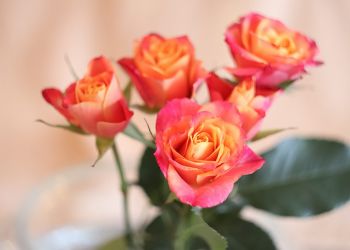Can miniature roses be planted outside? Often we think of miniature roses as an indoor plants. But can miniature roses be planted outside? That’s what I’m going through in this article.
Here’s the quick answer, then we’ll get into more details…
Yes, miniature roses can be planted outside. In fact, they perform best when grown outside. For them to bloom healthy, they require planting in a spot that has an ideal soil profile, sunlight, water, and pH requirements. Alongside general rose upkeep like fertilizing, deadheading, and pruning.
That’s the quick answer, but what are these requirements? And what do I mean by an “ideal planting spot.” I’ll get into that next.
When and where to plant miniature roses outside
The best time to plant miniature roses outside is in the spring or early summer.
Miniature roses are best planted outside in May but can be as late as June. Place it outside in shade at first so it can acclimatize and harden off against the outdoor conditions for a couple of hours. Expose it gradually to longer periods of sunlight over the next couple of weeks.
You can grow miniature roses outside in your garden bed. Just make sure whatever place you choose to plant them allows plenty of sunlight and has well-draining soil.
In essence, to grow miniature roses outside you will have to care for them as you would care for any large rose variety. If your mini rose isn’t blooming at all, then read this.
If you’re planning to plant it outside but very close to the house or fence, then it’s recommended to plant it on the west side, so the rose is sure to get enough direct sunlight every day. Also, don’t plant them under trees …or in a spot where it’s shaded by other plants.
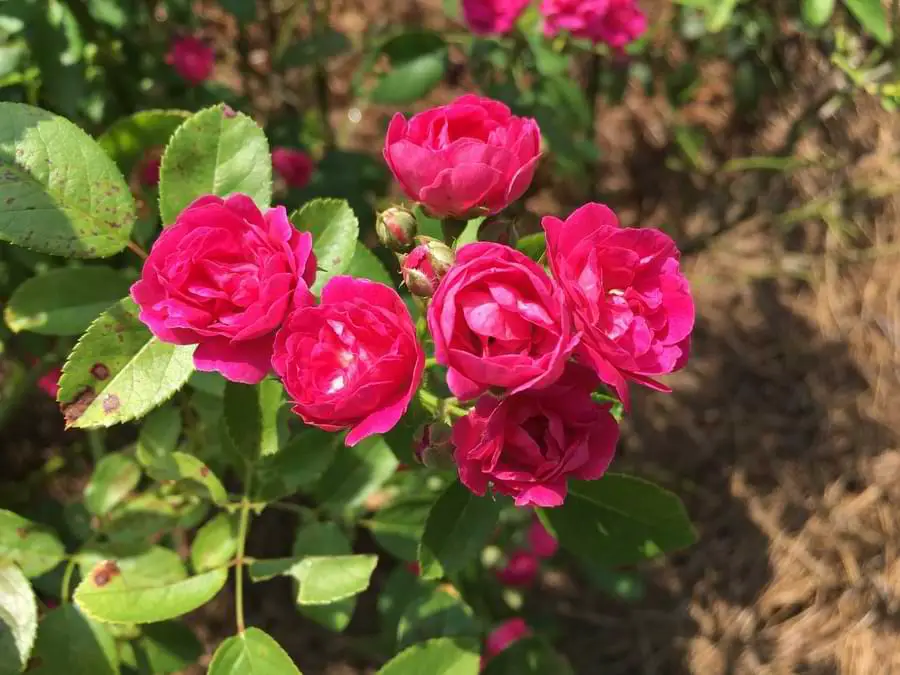
Planting miniature roses outside
Once you have selected the ideal spot to plant the bush, dig a hole that is approximately 4 inches deeper than the pot the plant came in and about 6 inches wider. Then layer some mulch-like peat moss at the bottom of the hole to improve drainage.
Next, gently remove the rose bush from the pot, loosen the roots, place the miniature rose in the hole, and surround it with dirt.
As the final step, pat down the sand to settle the dirt, water thoroughly, and then apply more mulch around the base of the plant – again this helps to retain moisture.
Remember that miniature roses – when planted outside – may grow into larger bushes than if they were in containers, but not drastically. However, the proportion of miniature roses’ leaves and blooms will remain the same regardless of how they are grown.
Right, so can miniature roses be planted outside – more about sunlight.
Sunlight requirements
Miniature rose bushes should be planted ideally in full sun. Roughly they need about six hours of sunlight daily to bloom their best
If you previously had your rose bush indoors, then as I mentioned before, you will want to gradually expose it to the sun outside. Start with a couple of hours a day, and then try to expose it to the sun until you can confidently plant it outside.
In general, miniature rose plants grown outside need a daytime temperature of around 70°F and a minimum nighttime temperature of 60°F. If you feel like the leaves appear to be burning, then reduce the exposure for a few days …and then resume.
One of the most common ways to know if your rose is not getting enough sunlight is when they get “leggy”; when they have long and spindly stems. Another way to identify this is when roses stop blooming, or just won’t bloom at all.
I’ve written a more in-depth post about mini roses and sunlight here.
Ideal pH
Can miniature roses be planted outside? For your miniature roses to grow outside properly they need a pH balance somehow between 6.5 to 6.8.
If your pH is too low, you can add commercial fertilizers with ammonium sulfate. On the other hand, if your pH is too high, then you might have to add a little lime to the soil to adjust it.
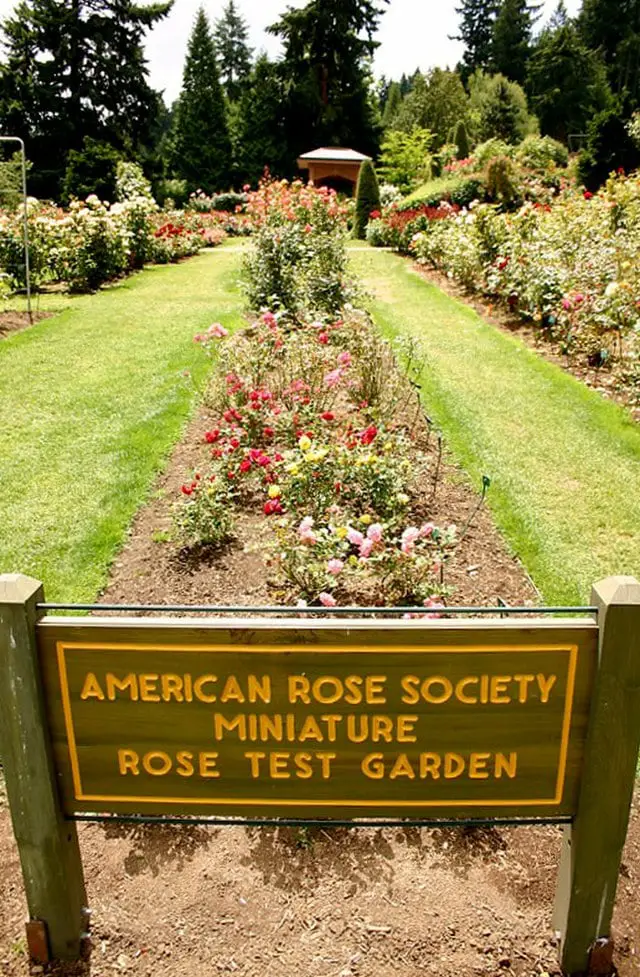
Watering
When growing miniature roses outside, they need to be watered thoroughly.
They should be watered a minimum of twice a week. Water them slowly so the water gets all the way down to the bottom of the roots.
Most importantly check if the area allows water to drain well enough so the root doesn’t stay too wet – roses don’t like wet feet! If they remain wet then they will rot and the plant could eventually die.
- Morning – watering your roses is best before the heat of the day.
- Midday – watering over the midday period can cause the petals and leaves to burn or blister in the hot sun.
- Evening – watering from early evening onward can cause powdery mildew if the leaves stay wet too long.
That’s the quick view, but you should read my post about when to water roses to get it absolutely right. And also my post about watering roses in hot weather.
Misting
The need to mist your miniature roses when they are grown outdoors depends on the level of humidity in your area or the temperature levels. If your weather is dry then misting (i.e. lightly spraying) your roses is recommended as the plant likes moist air.
But if you live in a relatively humid area, then you can skip the misting, as too much humidity can cause the roses to develop powdery mildew. It’s also a good idea to mist with dish soap added to the water, as this will help you keep insects and pests off your roses.
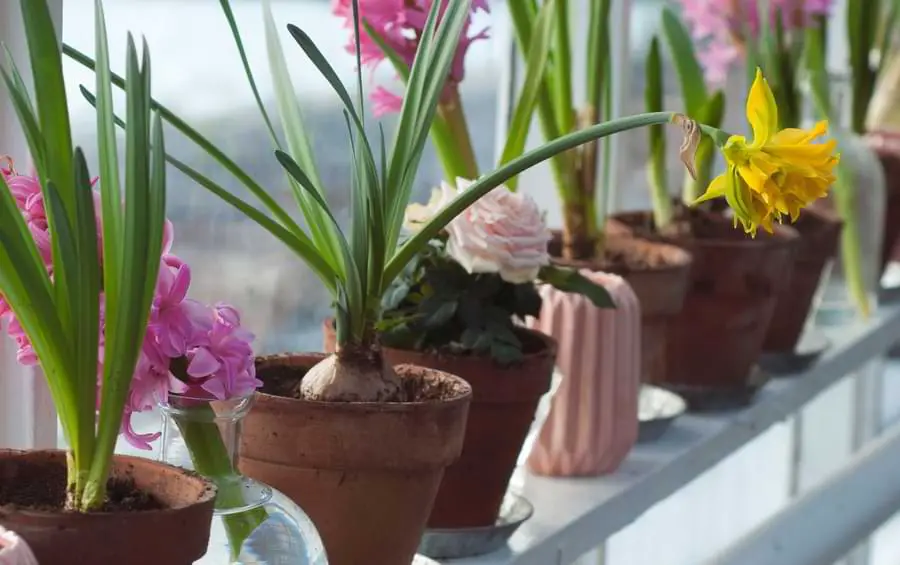
Deadheading and pruning
Those fading blooms in your miniature rose plant are called “deadheads.”
And while it seems wrong to remove blooms when there may still be some life left in them, It’s important to remove the deadheads from your miniature rose plant outdoors or indoors, to make it more attractive and to encourage more blooms.
In addition, these plants also need good air circulation for a healthy bloom, so you have to watch for dead branches and remove them as well.
In case you’re unaware pruning is basically where you cut away dead or overgrown branches or stems of a tree, shrub, or bush to especially encourage growth.
The best time to prune miniature rose plants grown outdoors is in the fall and through to Winter. And remember to cut the stems at an angle.
There are other things to know about pruning mini roses, so I have a post you should read about pruning mini roses here.
It’s a general standard to prune back the top one-third of the plant. Always use sharp pruning secateurs with blades that cross, rather than blades that meet. So choose secateurs like these. I like these as they can cut the thicker lower canes, but also they have soft-grip secateurs so they’re comfortable.
When pruning, roses can get a bit upset and jab you with their thorns, so use a pair of long sleeve protective gardening gloves like these.
Fertilizing
In general miniature roses are heavy feeders, especially because they continue to bloom all season. So it’s key that you provide your garden soil with a generous top dressing of compost. Doing this is extremely important to keep the flowers blooming at a healthy phase.
Here’s a post about my favorite compost and why.
Practicing regular fertilizing feeds the plant with the nitrogen, phosphorus, and potassium necessary for optimal growth and blooms.
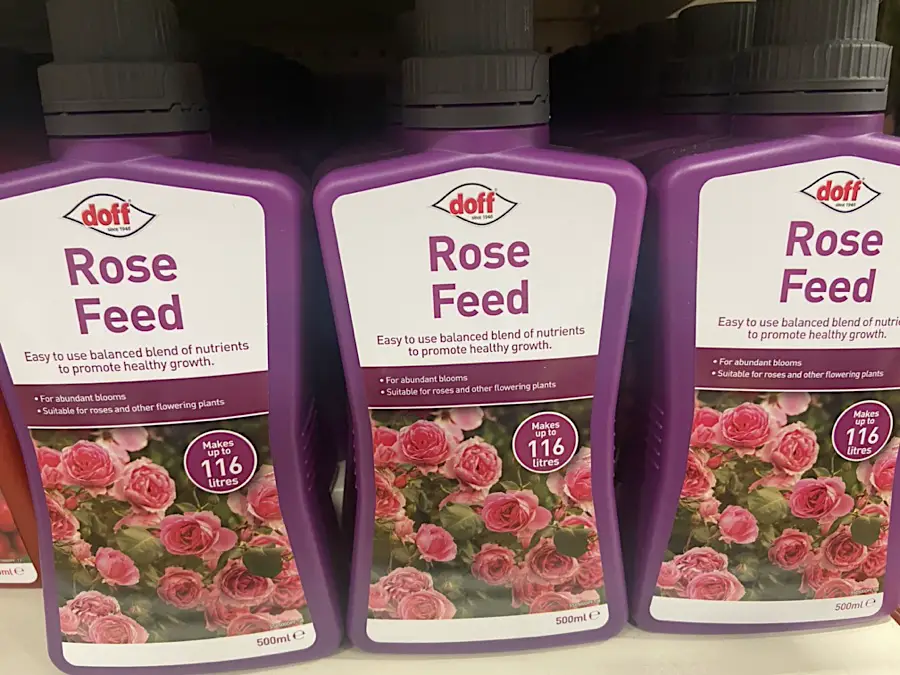
Feel free to use any commercial rose food or even opt for all-purpose fertilizer – applied according to the instructions given on the label.
It’s a general practice to start fertilizing the plant when the bush first begins its growth spurt in early Spring – or before, and again after each heavy flush of blooms.
However, I’d recommend you stop feeding the plant about 6-8 weeks before the first expected frost. This is done to discourage new growth that can be killed back during winter.
Once you’ve done all that, then you’re ready to read this article to get the most out of your mini rose blooms.
Here are a couple of related articles…
Can miniature roses be planted outside ~ More roses help 🌹
I hope this has provided you with some useful information on the question of “can miniature roses be planted outside”.
See also my list of recommended tools and favorite roses!

Hi, I’m Michael. My passion for roses was sparked a few years ago after visiting a dedicated community rose garden. So Rosehow.com represents my take, my learnings, and my help for anyone looking to grow, be proud of, and harvest roses.

